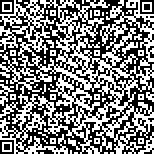| 摘要: |
| [摘要] 目的 研究3D镜像打印结合微创经皮锁定钢板内固定(MIPPO)技术治疗成人锁骨中段移位骨折的临床疗效。方法 选择2020年6月至2021年5月聊城市中医医院收治的成人锁骨中段移位骨折患者48例,采用随机数字表法将其分为观察组和对照组,各24例。观察组采用3D镜像打印结合MIPPO技术治疗,对照组采用传统切开复位内固定术治疗。比较两组手术时间、切口长度、术中出血量、透视次数、骨折愈合时间、术后并发症发生情况。比较两组手术前后Constant肩关节评分以评估临床疗效。结果 与对照组相比,观察组手术时间、切口长度更短,术中出血量、透视次数更少,骨折愈合更快,差异均有统计学意义(P<0.05)。与术前比较,两组Constant肩关节评分均显著提高(P<0.05)。但两组间Constant肩关节评分在术前与术后6个月比较差异均无统计学意义(P>0.05)。观察组术后无并发症发生,对照组发生切口周围麻木2例,两组术后并发症发生率比较差异无统计学意义(P=0.489)。结论 3D镜像打印结合MIPPO技术与传统切开复位内固定术均可有效治疗锁骨中段移位骨折,但3D镜像打印结合MIPPO技术具有创伤小、手术时间短、术中出血量少、术中透视次数少、骨折愈合快等优点。 |
| 关键词: 3D镜像打印 微创经皮锁定钢板内固定 锁骨中段移位骨折 临床疗效 |
| DOI:10.3969/j.issn.1674-3806.2022.04.13 |
| 分类号:R 683 |
| 基金项目: |
|
| A study on the clinical efficacy of 3D mirror printing combined with minimally invasive percutaneous plate osteosynthesis technology in treatment of adult displaced mid-clavicular fractures |
|
MU Sheng-kai, LIU Shi-kai, HAO Lian-sheng
|
|
Second Department of Bone Trauma, Liaocheng Hospital of Traditional Chinese Medicine, Shandong 252000, China
|
| Abstract: |
| [Abstract] Objective To study the clinical efficacy of three-dimensional(3D) mirror printing combined with minimally invasive percutaneous plate osteosynthesis(MIPPO) technology in the treatment of adult displaced mid-clavicular fractures. Methods Forty-eight cases of adult patients with displaced mid-clavicular fractures admitted to Liaocheng Hospital of Traditional Chinese Medicine from June 2020 to May 2021 were selected and divided into an observation group and a control group by random number table method, with 24 cases in each group. The observation group was treated with 3D mirror printing combined with MIPPO technology, while the control group was treated with traditional open reduction and internal fixation. The operation time, incision length, intraoperative blood loss, times of fluoroscopy, fracture healing time, and postoperative complications were compared between the two groups. The Constant shoulder joint score was compared between the two groups before and after surgery to evaluate the clinical efficacy. Results Compared with the control group, the observation group had shorter operation time, shorter incision length, less intraoperative blood loss, less times of fluoroscopy and faster fracture healing, and the differences were statistically significant(P<0.05). Compared with those before surgery, the Constant shoulder joint scores in the two groups were significantly improved after surgery(P<0.05), but there were no significant differences in the Constant shoulder joint scores between the two groups before surgery and 6 months after surgery(P>0.05). No postoperative complications were observed in the observation group, while 2 cases of numbness around the incision occurred in the control group. There was no significant difference in the incidence of postoperative complications between the two groups(P=0.489). Conclusion Both 3D mirror printing combined with MIPPO technology and traditional open reduction and internal fixation can effectively treat displaced mid-clavicular fractures, but 3D mirror printing combined with MIPPO technology has the advantages of less trauma, shorter operation time, less intraoperative blood loss, less times of intraoperative fluoroscopy and faster fracture healing. |
| Key words: Three-dimensional(3D) mirror printing Minimally invasive percutaneous plate osteosynthesis(MIPPO) Displaced mid-clavicular fracture Clinical efficacy |

